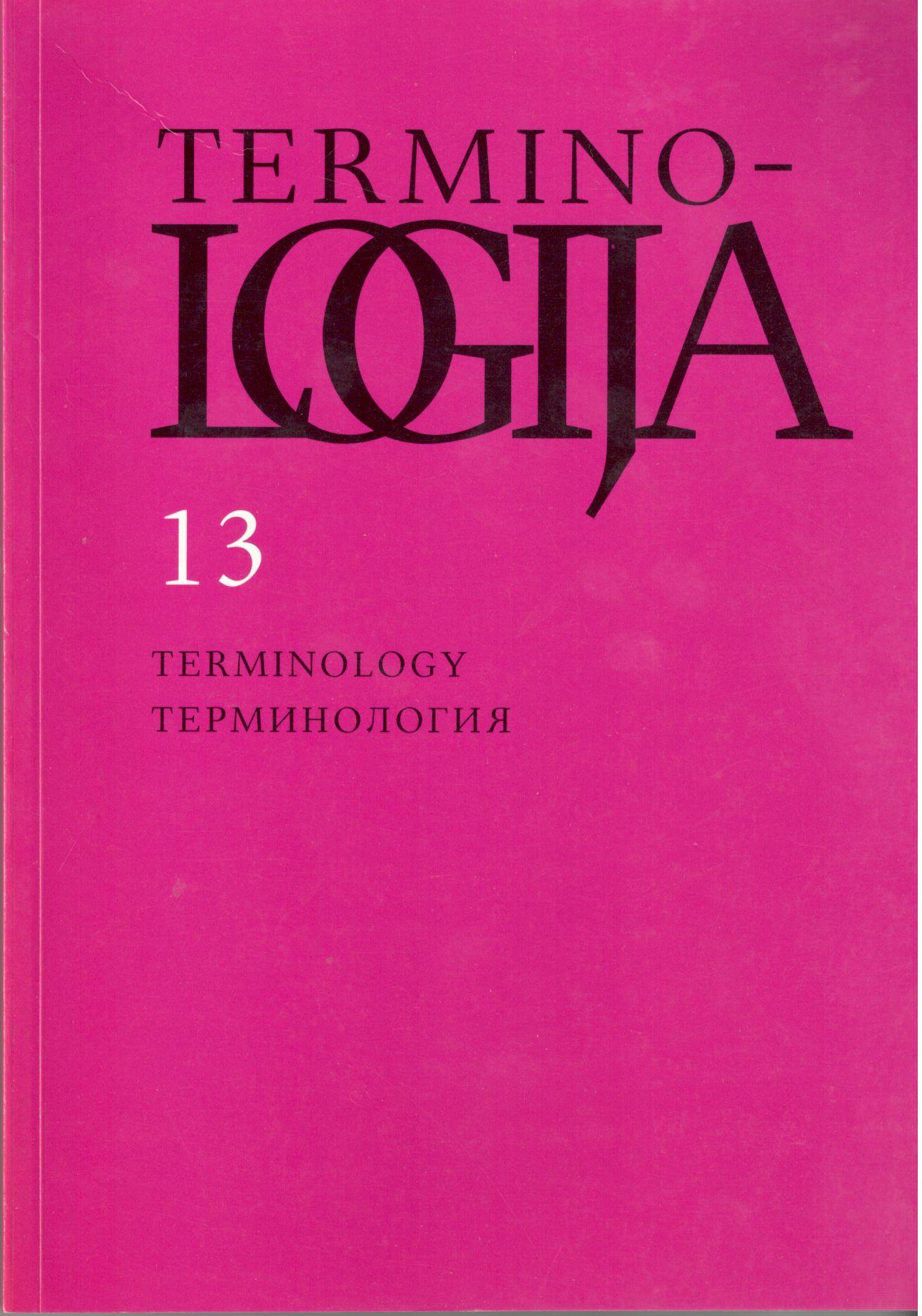Lietuviški metaforiniai statybos terminai
Lithuanian mataphorical terms of building terminology
Author(s): Robertas StunžinasSubject(s): Language and Literature Studies, Lexis, Descriptive linguistics, Baltic Languages, Philology
Published by: Lietuvių Kalbos Institutas
Keywords: terminology of construction; metaphoric term; nominative metaphor; attributive metaphor
Summary/Abstract: In this article 846 metaphorical terms are analyzed, i. e. 784 nominative and 62 attributive metaphors. Metaphorical building terminology is distinguished by its anthropocentricity. In the group of nominative metaphors more than three quarters (80,9%) of terms are names of human body parts, names of human physiological, physical conditions and processes and names of various things: [en elbow pipe – alkūnė ALSTŽ 246]; [en bleeding of (asphalt) – (asfalto) prakaitavimas ALSTŽ 34], [en (column) collar – (kolonos) apykaklė STŽ 28]. Only rarely in building terminology concepts are named after objects of nature: [en portal gantry – (kraninis) ožys STŽ 375], [(cemento) akmuo Grig 230]. The facts suggest that in building terminology mostly things are named in metaphors whereas metaphors of actions, states and other abstract expressions are rather rare.In building terminology metaphorization of meaning could have occured according to the usual regularities. For the majority of terms a metaphorical transfer of the name according to analogy of form or consistence is typical: [en drill bit – (grąžto) galvutė ALSTŽ 33], [en paste – tešla STŽ 641]. Only a small group of terms had a metaphorical transfer of the name according to analogy of functions [(rutulinis) malūnas Grig 142].Most of the terms analyzed are not new metaphors and they are a result of secondary metaphorical nomination. Metaphorical terminology of this field was created using metaphorical models of common lexis, most terms could have been borrowed from folk terminology: [(bėgio) kakliukas STŽ 232 – kakliukas LKŽ]. A major part of the terms could be semantic borrowings, i.e. metaphorical meanings could have been borrowed from other languages. More than three quarters (82,5%) of terms are identical to other language terms: [(bėgio) galvutė – en (rail) head, de (Schienen)kopf, ru головка (рельса) STŽ 159. However not all identical terms could be treated as semantic borrowings – most Lithuanian metaphorical terms are fully motivated in the native language. Equivalence of Lithuanian and other language terms could be explained by universality of metaphorical nomination and language contacts.Metaphoric nomination of attributes in building terminology is based on the features of everyday things and objects of fauna, and only rarely things are named after features of human body structure, physiological processes and conditions and objects of flora and inanimate nature. Attributes are named using metaphoric subordinate components according to exterior similarities to everyday things, musical instruments, plants and objects of nature: [balniškoji (atrama) ALSTŽ 87, 330]; [būgninis (katilas) ALSTŽ 294]; [eglutiškoji (perriša) ALSTŽ 39]; [marmurinis (puvinys) RLSTŽ 61]. Often subordinate components name surface characteristics: [dantytasis (plaktukas) ALSTŽ 169]. In other cases naming of attributes is based on various associations (form, function) with things named in underlying words: [kurminis (drenažas) ALSTŽ 115], [lizdinis (pamatas) ALSTŽ 35], [stuburinė (siena) STŽ 508].In other languages metaphoric nomination of attributes proceeded according to the same principles. It could be considered that Lithuanian metaphoric subordinate components were created following the example of other language terms: [„dobilo lapo“ (sankryža) – en cloverleaf (junction), ru (перекрёсток) по типу клеверного листа STŽ 497], [drugeliškasis (stogas) – en butterfly (roof) STŽ 583], [kelniškasis (trišakis) – ru штаноо6разный (тройник), fr (raccord a trots voices) a pantalon STŽ 660, ALSTŽ 144].
Journal: Terminologija
- Issue Year: 2006
- Issue No: 13
- Page Range: 62-73
- Page Count: 12
- Language: Lithuanian

